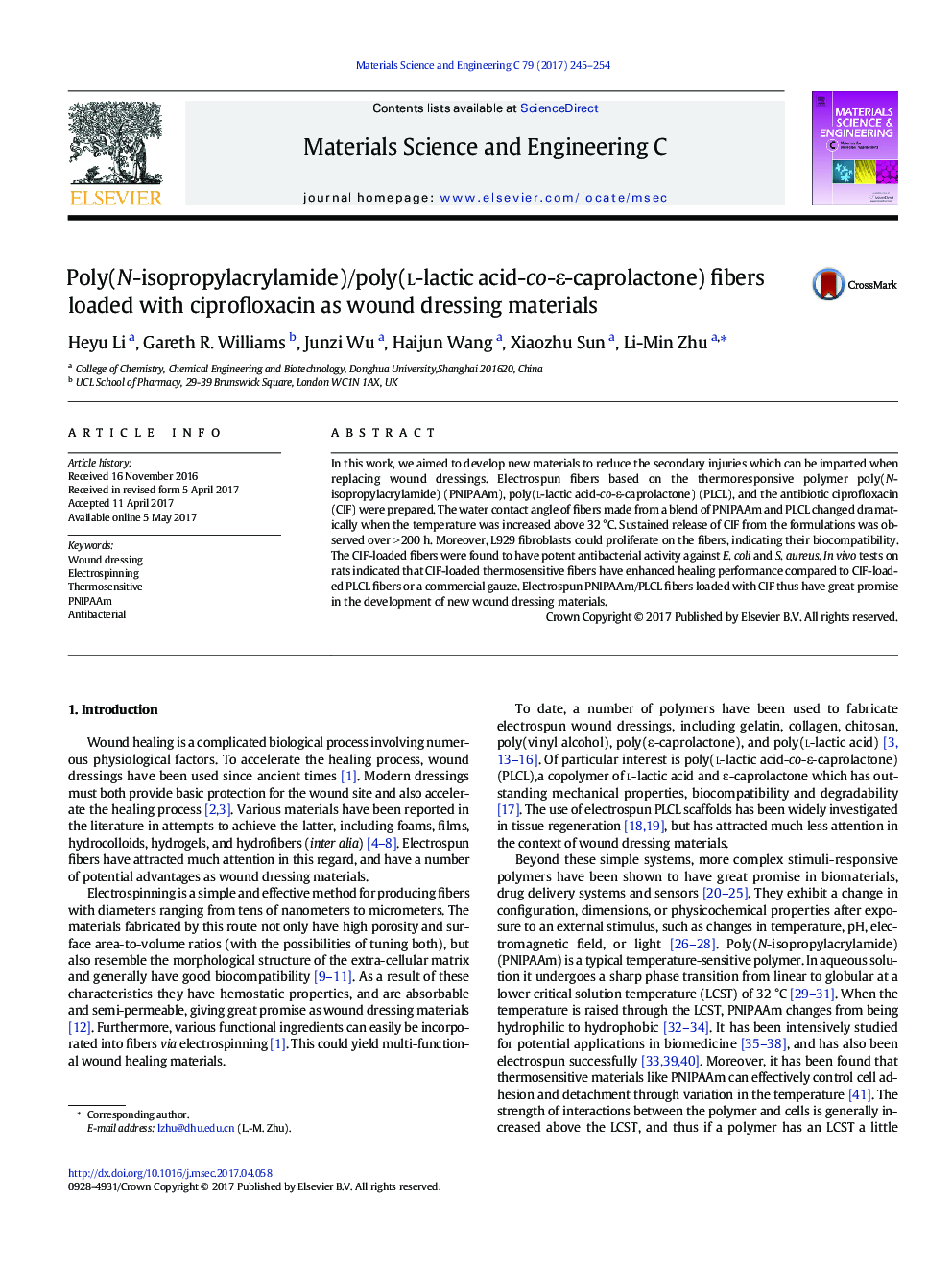| Article ID | Journal | Published Year | Pages | File Type |
|---|---|---|---|---|
| 5434726 | Materials Science and Engineering: C | 2017 | 10 Pages |
â¢PNIPAAm was blended with PLCL and ciprofloxacin, and electrospun to form thermosensitive fibers.â¢The wettability of the fibers changed dramatically when the temperature was increased.â¢Ciprofloxacin could be released from the fibers gradually, and imparted them with antibacterial activity.â¢Fibroblasts could proliferate on the fibers, indicating good biocompatibility.â¢The fibers have very promising healing performance in vivo.
In this work, we aimed to develop new materials to reduce the secondary injuries which can be imparted when replacing wound dressings. Electrospun fibers based on the thermoresponsive polymer poly(N-isopropylacrylamide) (PNIPAAm), poly(l-lactic acid-co-É-caprolactone) (PLCL), and the antibiotic ciprofloxacin (CIF) were prepared. The water contact angle of fibers made from a blend of PNIPAAm and PLCL changed dramatically when the temperature was increased above 32 °C. Sustained release of CIF from the formulations was observed over > 200 h. Moreover, L929 fibroblasts could proliferate on the fibers, indicating their biocompatibility. The CIF-loaded fibers were found to have potent antibacterial activity against E. coli and S. aureus. In vivo tests on rats indicated that CIF-loaded thermosensitive fibers have enhanced healing performance compared to CIF-loaded PLCL fibers or a commercial gauze. Electrospun PNIPAAm/PLCL fibers loaded with CIF thus have great promise in the development of new wound dressing materials.
Graphical abstractDownload high-res image (82KB)Download full-size image
